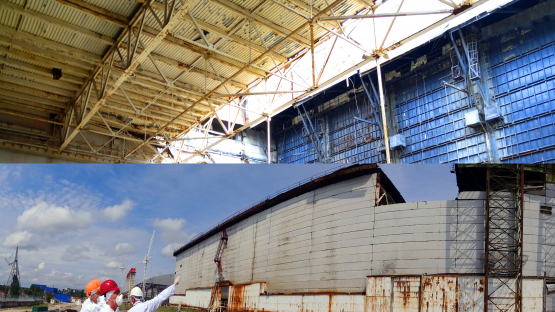An International Atomic Energy Agency (IAEA) expert team has completed a mission to review the causes and effects of a partial roof collapse at Chernobyl Nuclear Power Plant (NPP) in February 2013. At the request of the Chernobyl NPP, the IAEA organized the mission to the plant which began on 3 June and delivered its preliminary conclusions and recommendations on 7 June 2013.
On 12 February 2013, a portion of the roof over Chernobyl NPP Unit 4 Turbine Hall collapsed. According to Ukrainian officials, the sarcophagus protecting the damaged reactor core nearby was unaffected and there was no release of radioactivity from the incident.
The expert team was asked to assess the root causes of the collapse, any radiological consequences of the incident, and the plant's response to the event.
In its preliminary report, the team credited plant personnel for their timely response to the incident, their investigation into the causes of the event, and their rapid reporting to the public. Site officials have also responded to the roof incident without affecting plans to deploy a permanent shelter over the sarcophagus that was erected in 1986 following the accident.
In addition, the experts offered recommendations for implementing organizational and technical measures to enhance the monitoring of the building structures, and improving general industrial and radiation safety at the site.
The final official report on the IAEA Mission findings will be presented to the Director General of the Chernobyl NPP this month, and plant management has committed to make the final report publicly available.
The mission was organized by the IAEA Technical Cooperation Department. The team was made up of three IAEA staff members from the Department of Nuclear Energy and the Department of Nuclear Safety and Security and four external specialists.


